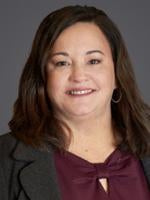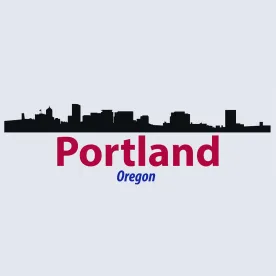On August 17, 2020, the Oregon Occupational Safety and Health Administration (Oregon OSHA), the state plan responsible for overseeing workplace safety and health in the state of Oregon, released a draft COVID-19 temporary standard. Following Virginia’s lead, Oregon will become the second state in the nation to adopt a specific standard intended to protect workers from COVID-19 exposure.
The draft is not a final version, and Oregon OSHA invited stakeholders to provide comments as soon as possible, but by no later than August 31, 2020, with planned adoption of a final rule by September 14, 2020.
Overview
The temporary standard begins by breaking the workforce down into three segments: (1) all workplaces; (2) workplaces with a “heightened risk” of exposure; and (3) workplaces with an “exceptional risk” of exposure. The standard then layers requirements on each segment, with additional workplace safety requirements for employees at higher risk of exposure to COVID-19.
“Workplaces at heightened risk” of exposure would include establishments where employees “perform a close-in tactile person-to-person work activity,” including “any job duty or work operation that requires an employee to be within six feet of another individual for longer than 15 minutes and that includes the direct touching of the individual with the employee’s hands or by the use of instruments or tools.” Examples include “tattooing, massage, hair dressers, barbers, beauticians, and make-up artists.”
“Workplaces at exceptional risk” of exposure would include those that “are involved in at least one of the following:
-
Direct patient care in a healthcare setting;
-
Aerosol-generating healthcare or postmortem procedures;
-
Emergency first responder activities;
-
Handling, packaging, cleaning, processing, or transporting of ‘contaminated materials’ as defined by this rule; or
-
Handling, packaging, cleaning, processing, or transporting human remains or human tissue specimens or laboratory cultures collected from an individual suspected or known to have COVID-19.”
Requirements for All Workplaces
Social distancing or droplet buffer. Oregon OSHA’s temporary standard would implement a mandatory six-foot social distancing requirement in all workplaces. If six feet of separation cannot be maintained at all times, then employees must wear face coverings. To satisfy the social distancing requirement, employers may install “an impermeable barrier that creates a ‘droplet buffer’ that provides at least 6-feet in distance between the mouths of the affected individuals.”
Motor vehicle travel. According to the temporary standard, “[w]henever employees are transported in a motor vehicle for work purposes, the center points of the seats must be separated by at least 3-feet.” All employees must also wear face coverings while in the vehicle.
Face coverings. The temporary standard states that “[f]ace coverings must be worn by employees and other individuals” whenever six feet of social distancing cannot maintained.
Sanitation. The temporary standard requires all employers to clean thoroughly “all high-contact surfaces used by multiple employees (door handles, telephones, cash registers, computers, drinking fountains, seatbelts, etc.) … at the beginning of each shift.”
Social distancing officer. “All employers with at least 25 employees at any time must designate one or more employees … as a ‘social distancing officer,’” to enforce the distancing rules of the standard.
Building operators. The temporary standard requires employers that “operate or otherwise control buildings where the employees of other employers work [to] ensure that the building layout allows appropriate social distancing” and post the temporary standard’s basic requirements in common areas, such as “shared entrances, waiting rooms, corridors, restrooms, and elevators.” Building operators would also be responsible for enforcing these COVID-19 rules “to the degree the building operator is reasonably able to do so.”
Posting requirements—new “COVID-19 Hazards Poster.” Oregon OSHA is developing a “COVID-19 Hazards Poster” that all employers must post “in a central location where workers can be expected to see it.”
Employee training. The temporary standard requires employers to provide training to employees on social distancing, employer policies and procedures, and paid leave.
Medical removal and mandatory two-week paid leave provision. If a “medical provider or public health official recommends isolation or quarantine [of an employee],” the temporary standard requires the employer to reassign the affected worker to “duties that do not involve in-person contact with other workers or the public.” This reassignment continues “until the need for isolation no longer exist[ed], based on guidance from the employee’s medical provider or from the involved public health officials.” Employer may not overrule the medical provider’s or public health official’s determination. The employee would then be “entitled to return to previous job duties without any adverse action as a result of the medical removal.”
If such reassignment is not possible, the employer “must allow workers to use leave to which they are entitled under the [Families First Coronavirus Response Act (FFCRA)]. If the employer is not covered by the FFCRA or has previously opted out of the paid sick leave provisions of the FFCRA, then the employer must provide up to two weeks of paid reassignment leave in addition to whatever benefits to which the worker would otherwise be entitled (such leave will be provided at 40 hours per week for full-time employees and on a pro-rata basis for part-time employees).”
The draft provides two exceptions to the mandatory paid leave requirement:
-
First, “[e]mployers who would otherwise be required to provide paid leave may count any benefits currently available that were not available prior to March 1, 2020 toward the paid reassignment leave requirement.”
-
Second, “[e]mployers who would otherwise be required to provide paid reassignment leave who experienced a reduction of more than 20 percent (20%) in gross revenue between the 2nd (second) calendar quarter of 2019 and the 2nd (second) calendar quarter of 2020” are excused from the paid leave requirement.
Key Takeaways
-
Prepare to post the Oregon OSHA COVID-19 Hazards Poster when it is released.
-
Implementation of social distancing and face covering regulations will be required.
-
Perhaps the most questionable aspect of the draft temporary standard is Oregon OSHA’s “medical removal” requirement that an employer provide employees with up to two weeks of paid leave if the employer is not otherwise covered by the FFCRA, or opted out of the FFCRA’s leave provisions. The employer must provide paid sick leave without regard to whether an employee’s COVID-19 infection is work-related. It is unclear whether Oregon OSHA has the legal authority to implement such a requirement. Oregon OSHA is effectively attempting to enact a paid leave requirement without the Oregon legislature.
-
It is also unclear whether the “social distancing officer” requirement applies only to worksites with 25 or more employees, or to employers with 25 or more employees. An employer, for example, may operate 15 gas stations in Oregon, each with two employees – one cashier and one attendant. Must the employer designate a social distancing officer? Must an employer designate a social distancing officer for each station?





 />i
/>i

